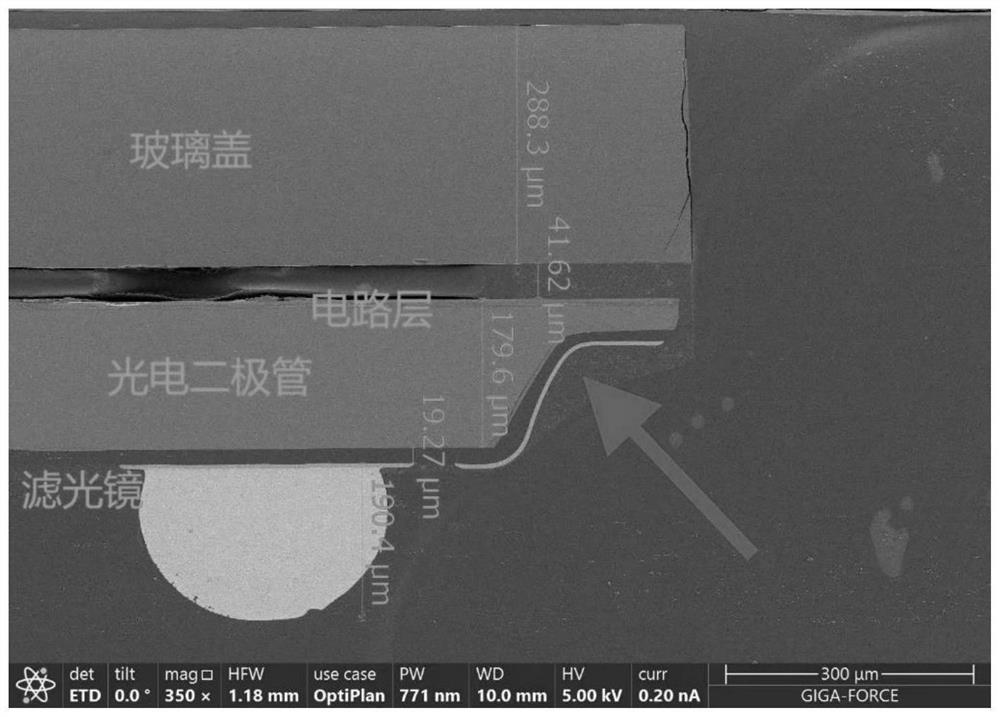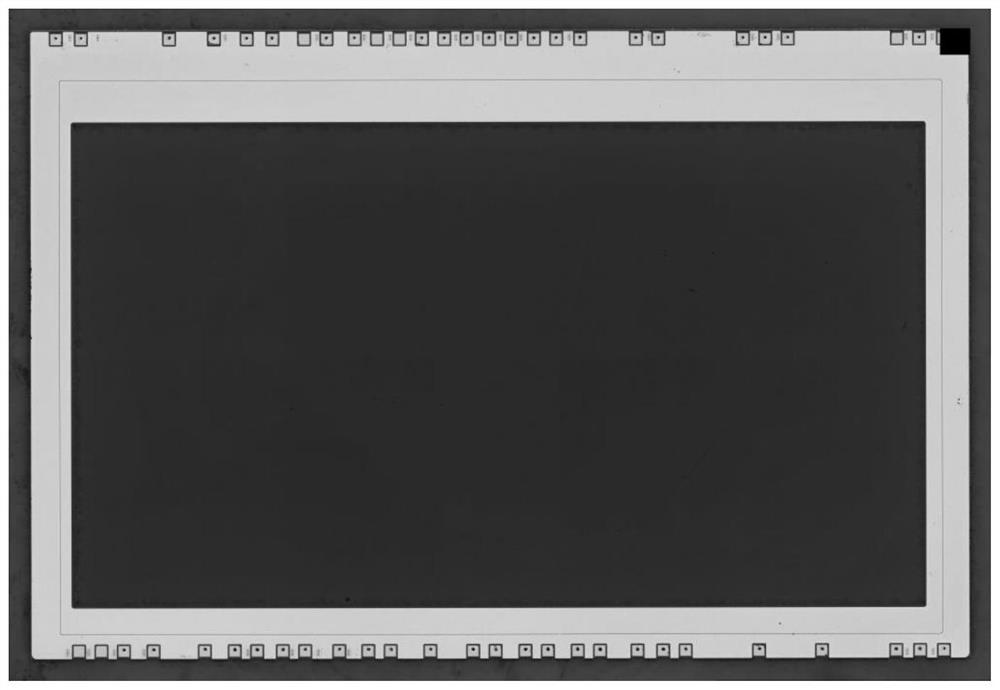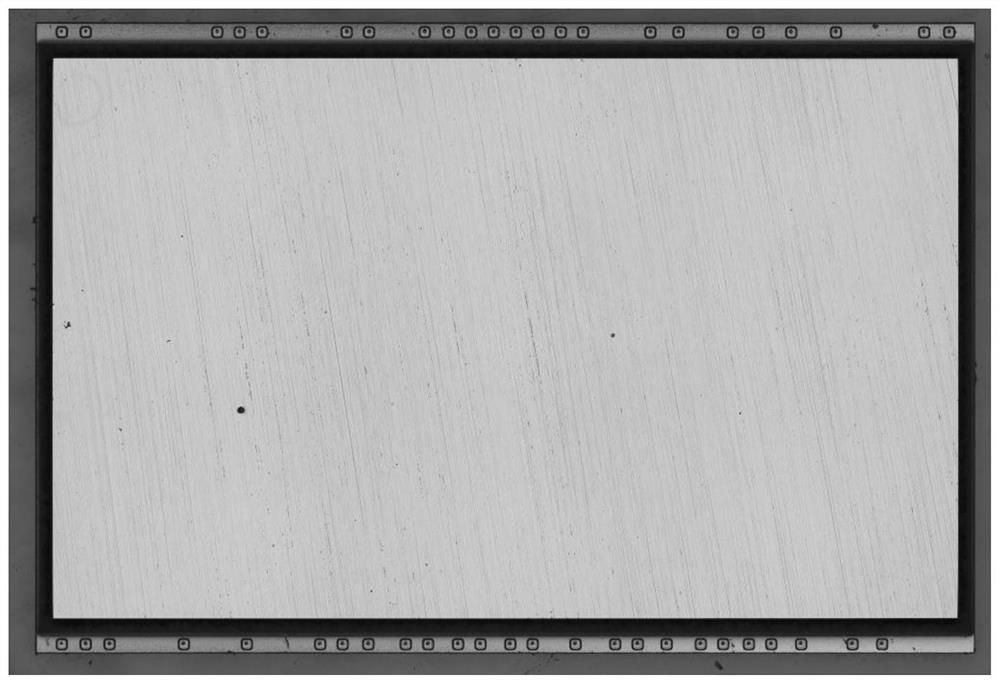Method for taking crystal grains from backside illuminated CMOS (complementary metal oxide semiconductor) sensor and application
A CMOS sensor, back-illuminated technology, applied in the field of CMOS sensors, can solve the problem of not being able to take a complete grain, and achieve the effect of improving imaging quality, increasing speed, high sensitivity and signal-to-noise ratio
- Summary
- Abstract
- Description
- Claims
- Application Information
AI Technical Summary
Problems solved by technology
Method used
Image
Examples
Embodiment 1
[0096] This embodiment provides a method for taking crystal grains in a back-illuminated CMOS sensor, comprising the following steps:
[0097] (a) placing the back-illuminated CMOS sensor in mixed acid for treatment to remove at least most of the packaging material on the surface of the grain, and taking it out to obtain a pre-treated grain;
[0098] Wherein, the mixed acid includes sulfuric acid and nitric acid, the mass fraction of sulfuric acid is 98%, the mass fraction of nitric acid is 68%, the volume ratio of sulfuric acid and nitric acid is 5:1, the treatment temperature is 150°C, and the treatment time is 1h;
[0099] (b) Apply glue (AB glue for preparing metal pattern samples, high temperature resistance temperature is 220°C) on the silicon wafer, and fix the side of the pretreated grain close to the circuit layer on the silicon wafer (can be used at 100°C Bake for 40 minutes to solidify), to ensure that there are no air bubbles between the pre-treated grains and the ...
Embodiment 2
[0105] This embodiment provides a method for obtaining crystal grains in a back-illuminated CMOS sensor. Except that the volume ratio of sulfuric acid and nitric acid in the mixed acid in step (a) is 4.5:1, the remaining steps and process parameters are the same as in Embodiment 1.
Embodiment 3
[0107] This embodiment provides a method for obtaining crystal grains in a back-illuminated CMOS sensor. Except that the volume ratio of sulfuric acid and nitric acid in the mixed acid in step (a) is 4:1, the remaining steps and process parameters are the same as in Embodiment 1.
PUM
| Property | Measurement | Unit |
|---|---|---|
| High temperature resistance | aaaaa | aaaaa |
| Thickness | aaaaa | aaaaa |
| Thickness | aaaaa | aaaaa |
Abstract
Description
Claims
Application Information
 Login to View More
Login to View More - R&D
- Intellectual Property
- Life Sciences
- Materials
- Tech Scout
- Unparalleled Data Quality
- Higher Quality Content
- 60% Fewer Hallucinations
Browse by: Latest US Patents, China's latest patents, Technical Efficacy Thesaurus, Application Domain, Technology Topic, Popular Technical Reports.
© 2025 PatSnap. All rights reserved.Legal|Privacy policy|Modern Slavery Act Transparency Statement|Sitemap|About US| Contact US: help@patsnap.com



